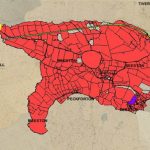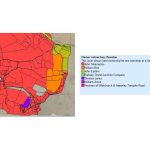A brief history of Beeston
Beeston is a village and civil parish in the unitary authority of Cheshire West and Chester, which itself is located in the ceremonial county of Cheshire in the north of England. It is located approximately 12miles south-east of Chester, and approximately 3.5 miles south-west of Tarporley; close to the Shropshire Union Canal. According to the 2011 census, Beeston had a population of 188.
Beeston crag is one of a chain of rocky hills stretching across the Cheshire Plain. Pits dating from the 4th millennium BC indicate the site of Beeston Castle may have been inhabited or used as a communal gathering place during the Neolithic period. Archaeologists have discovered Neolithic flint arrow heads on the crag, the remains of a Bronze Age community, and an Iron Age hill fort. The rampart associated with the Bronze Age activity on the crag has been dated to around 1270–830 BC; seven circular buildings were identified as being either late Bronze Age or early Iron Age in origin. It may have been a specialist metalworking site
Beeston Castle was built by Ranulph de Blondeville, 6th Earl of Chester, in the 1220s, as an impregnable stronghold and a symbol of power. The siting of the castle’s outer bailey walls was chosen to take advantage of the fortifications remaining from the earlier Iron Age rampart. In medieval documents the castle is described as Castellum de Rupe, the Castle on the Rock. To provide the castle’s inhabitants with a supply of fresh water two wells were dug into the rock, one of them, at 370 feet (113 m) deep is one of the deepest castle wells in England.
At the time of Ranulph’s death in 1232, there were no living quarters, and neither were there on the death of Ranulph’s successor, John, in 1237. John died without a male heir, allowing King Henry III to take over the Earldom of Cheshire.
In 1254 Henry gave Beeston, together with other lands in Cheshire, to his son Prince Edward. He also gave the title Earl of Chester to the prince, a title that has been conferred on the heir to the throne of England ever since.
There have been persistent rumours of a treasure hidden by Richard II somewhere in the castle grounds. Richard is supposed to have hidden part of his personal wealth at Beeston on his journey to Chester in 1399.
It may come as a surprise to learn that a Beeston man was one of the foremost English sailors who fought with Drake, Frobisher and Hawkins against the Spanish Armada. His name was George Beeston, lord of the manor of Beeston, a descendent of Henry de Hunbury (Bunbury!!) who took the name Beeston from the place of his residence. For his part in the battle against the Armada George Beeston was knighted on board the Ark, at sea by the Lord High Admiral, Lord Howard of Effingham.
To find out more of the history of the village, a useful source is Ormerod’s History of Cheshire published in 1818.
Relevant pages for Beeston can be found by clicking below
Ormerod complete – click here
The 1846 Tithe Maps of Cheshire show that John Tollemache owned most of the land in Beeston. Click on the maps below for more details.


